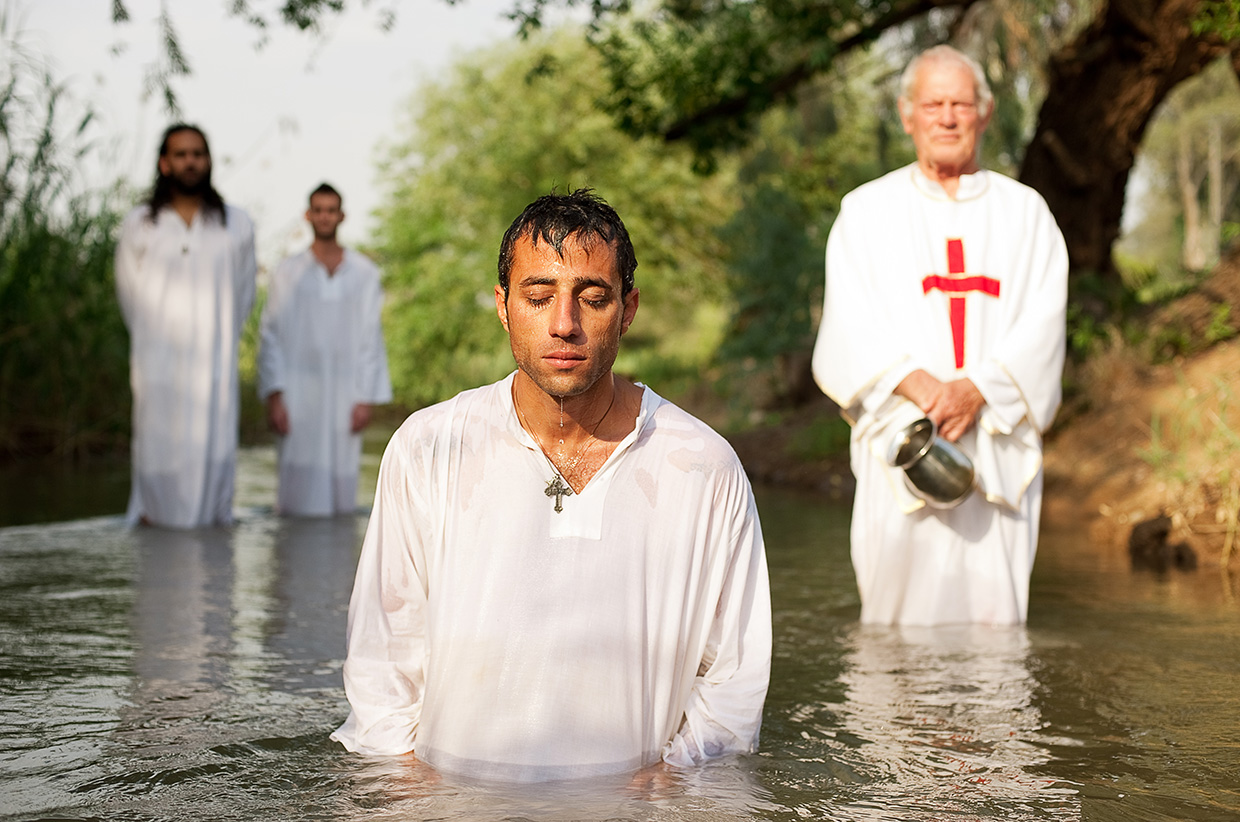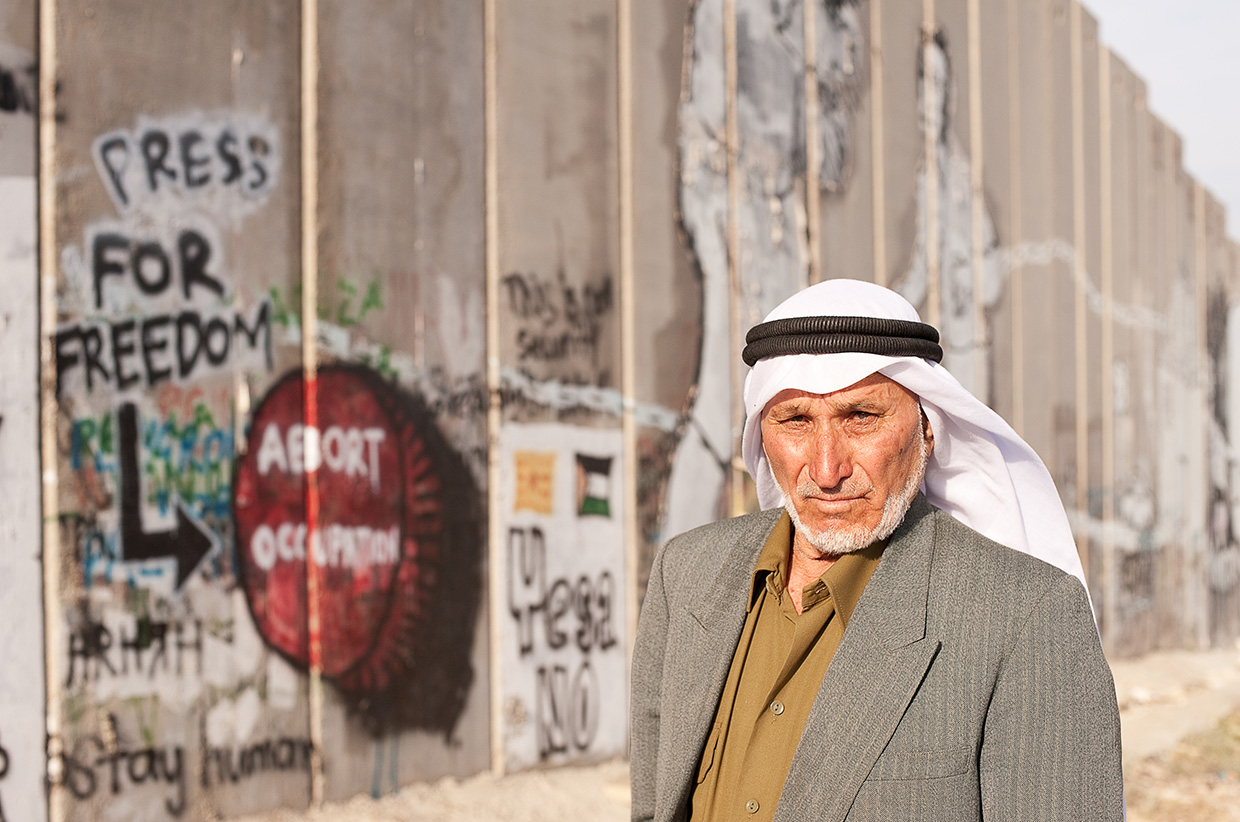Israel: A Photo Journal
Simon Urwin
The immigration queue at Tel Aviv airport is busy with believers. While we wait, there is much touching of personal crucifixes, flicking through religious texts and curling of earlocks.
As a devout infidel, I go my separate way from the crowds once we officially enter the Holy Land – they off to their sites of divine pilgrimage and me in search of a series of stylised portraits which reflect something of this complicated, often-contested ‘land of milk and honey’.
I head for Bnei Brak, a town which is never on the tourist trail. Here, in the ultra-orthodox outskirts of open-minded Tel Aviv, bearded men in black coats walk side by side with their long-skirted wives, their heads shaven for the sake of modesty, covered with an assortment of wigs and scarves.
The Haredi (literally ‘those who tremble in awe of God’) are the most conservative of Jews – their insular lives revolve almost exclusively around Torah study, prayer and family. It’s a surprise to see some young guys shooting hoops on a makeshift basketball court. They agree to a photo out of sight at the back of a disused furniture warehouse.

That night on the TV (which many of them shun along with the internet as a source of moral corruption) 15,000 Haredi are protesting on the streets of Jerusalem against enforced service in the Israeli military. ‘The Torah above everything’ they chant, ‘the army will not take pupils from Yeshiva.’ (Jewish religious school)
Since the founding of Israel, military conscription has been an obligatory rite of passage for almost all citizens as soon as they reach the age of 18. Consequently, you see scores of young Israelis on the streets every day sporting automatic weaponry and uniforms as comfortably as London kids do wearing H&M and Primark. In front of a synagogue, I chat with a female soldier excited to be starting her two years of service (see main photo).
’Being trained in the military not only means we can take up arms and fight for our right to exist’ she tells me, ‘it provides discipline, turns you into an adult and gives you another perspective on life – you will learn you are physically and mentally capable of going way beyond whatever you once thought was possible’.
Along its length, pilgrims flock to immerse themselves in the River Jordan, where story has it Jesus was baptized by St. John. I head north towards the Golan Heights to join them and spend a surreal morning up to my neck in freezing cold water photographing a ceremony where the faithful have travelled from as far afield as Poland, Brazil and Russia to replicate the act. Appropriately, one of them is long-haired and bearded like he’s just stepped out of the bible.

There is worship of another kind on the beach back in secular Tel Aviv – the body beautiful. Gal (foreground) works out at least 4 times a week, ‘I used to be fat until I did army service’ he says. Refeal (right of frame) is a stripper and manager of the ‘Loveboys’, the Israeli version of the Chippendales. He works out 5-6 times a week. ‘This is a very stylish city’, they explain, ‘full of designer clothes and beautiful people. For 8 months of the year we are all on the beach half-naked – if you don’t look good, you don’t feel comfortable living here.’

So many people I meet have come from somewhere else, most in search of some kind of sanctuary. On a scorched rooftop I sit down with Aziz, an Iranian Jew, who can’t remember when he first arrived in Israel but thinks it was around 50 years ago. He and his friend like to come up here to smoke a nargileh pipe and drink in the peace and quiet.

Later that day in Kiryat Ekron, one of the centres of the Yemeni community in Israel, I get access to shoot a blushing bride, Einav, on her wedding day. Einav’s forefathers were brought here during the secret operation ‘Magic Carpet’ which began in June 1949 as British & American transport planes airlifted 50,000 Yemenite Jews from their original homeland to a new one.
‘I am very excited but very nervous. I had just one hour’s sleep last night’, Einav tells me before the nuptials get under way. Of her husband-to-be, Gabriel, she enthuses ‘he is the most handsome man in the world, very shy, very kind and considerate. When I first saw him… I just knew.’

I drive to Jerusalem and cross the checkpoint into the West Bank. I’m in search of the Bedouin, the nomadic-pastoralists displaced over the decades from the Negev desert by politics and violence, ending up in settlements outside Hebron, Jericho and Bethlehem.

A woman called Sabha proudly tells me she has 6 daughters, 4 sons, 200 sheep and 20 camels. Her days are spent milking and making bread while her evenings are kept busy making sure a rusting satellite dish picks up Arabic cartoon channels for her grandchildren to watch. Her face is full of a lifetime of hardship. She is only 48 years old.

In Bethlehem, a long way from the tourist hoards at the Church of the Nativity, I head for the Aida refugee camp which sits in the shadow of the infamous Separation Wall. Abdel was just 15 when his village, Bayt Nattif, was ‘depopulated’ and he was moved here. He is now 80.
’Back then I was full of sorrow and anger. I still miss my land,’ he tells me. ‘Before (the 1948 Arab-Israeli war) Jews, Christians and Muslims lived together as one, side by side, like brothers.’ Of the wall he says: ‘It’s an ugly symbol of the failings of humanity but because I believe in God I pray that one day it will come down and there will be peace. I hope to see that before I die.'


Simon Urwin is a former award-winning TV exec who in the course of a 20-year career experienced tribal life with the Himba in Namibia, investigated hallucinogenic plant medicines in the Peruvian Amazon, explored the Jordanian desert with the British Special Forces and attempted to ‘Bring Back The A Team’ in Hollywood.
An avid traveller – 65 countries and counting – he now works as a travel & lifestyle photographer with clients including John Lewis, Tesco’s, Historic Royal Palaces and Lonely Planet Traveller magazine.
Twitter: @SimonUrwinPhoto
Facebook: Simon Urwin Photography



